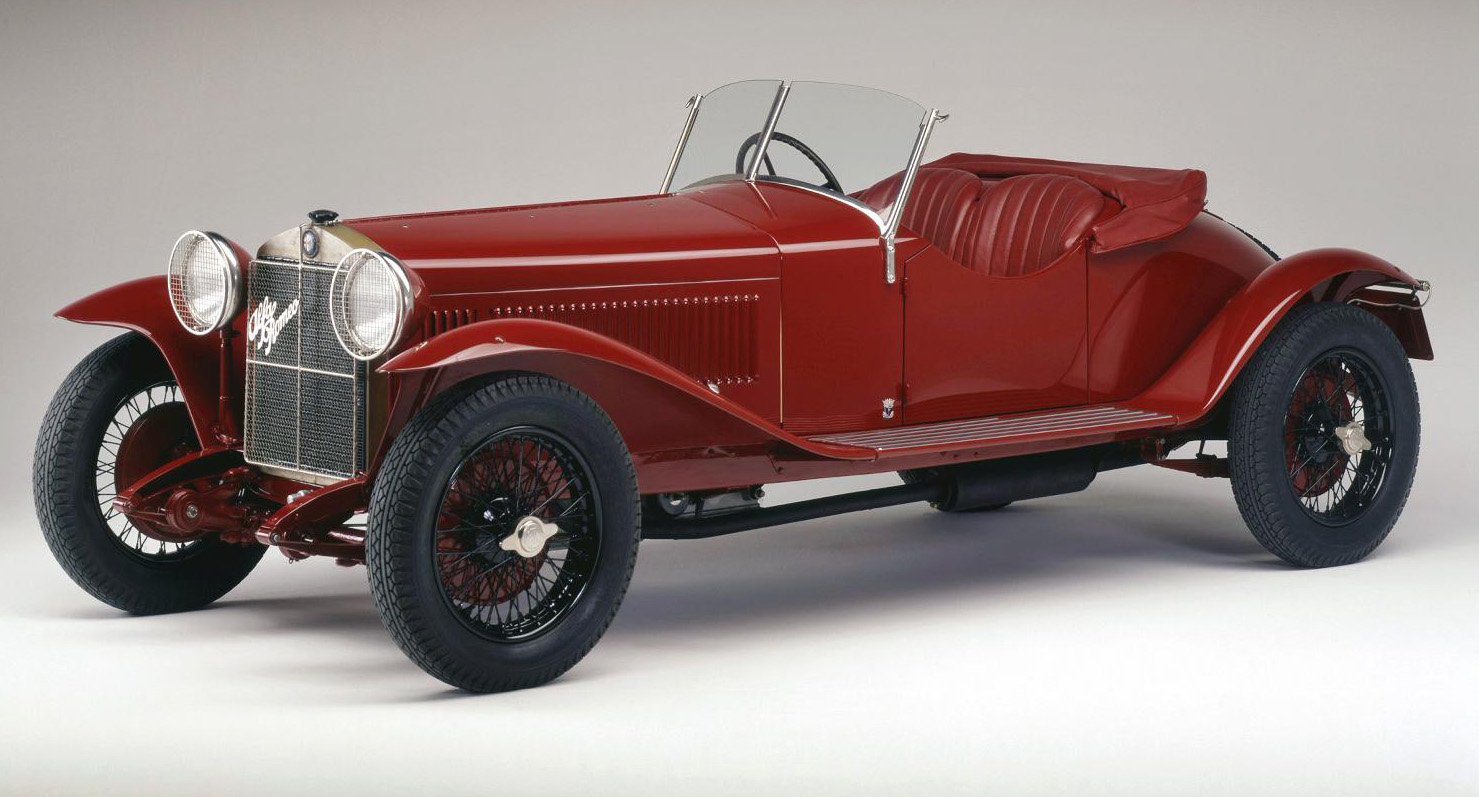
ALFA ROMEO HERITAGE AT THE MILLE MIGLIA
The 6C 1500 Super Sport of 1928 (Stabilimenti Farina bodywork) is the first turismo model of the Jano era. The 1500 made its début in 1927 by winning at the Modena Circuit with the team of Enzo Ferrari–Giulio Ramponi. It won the first of 11 Alfa victories at the Mille Miglia the following year, with Giuseppe Campari and Giulio Ramponi, who clinched the win with a car similar to the Alfa Romeo Museum example.
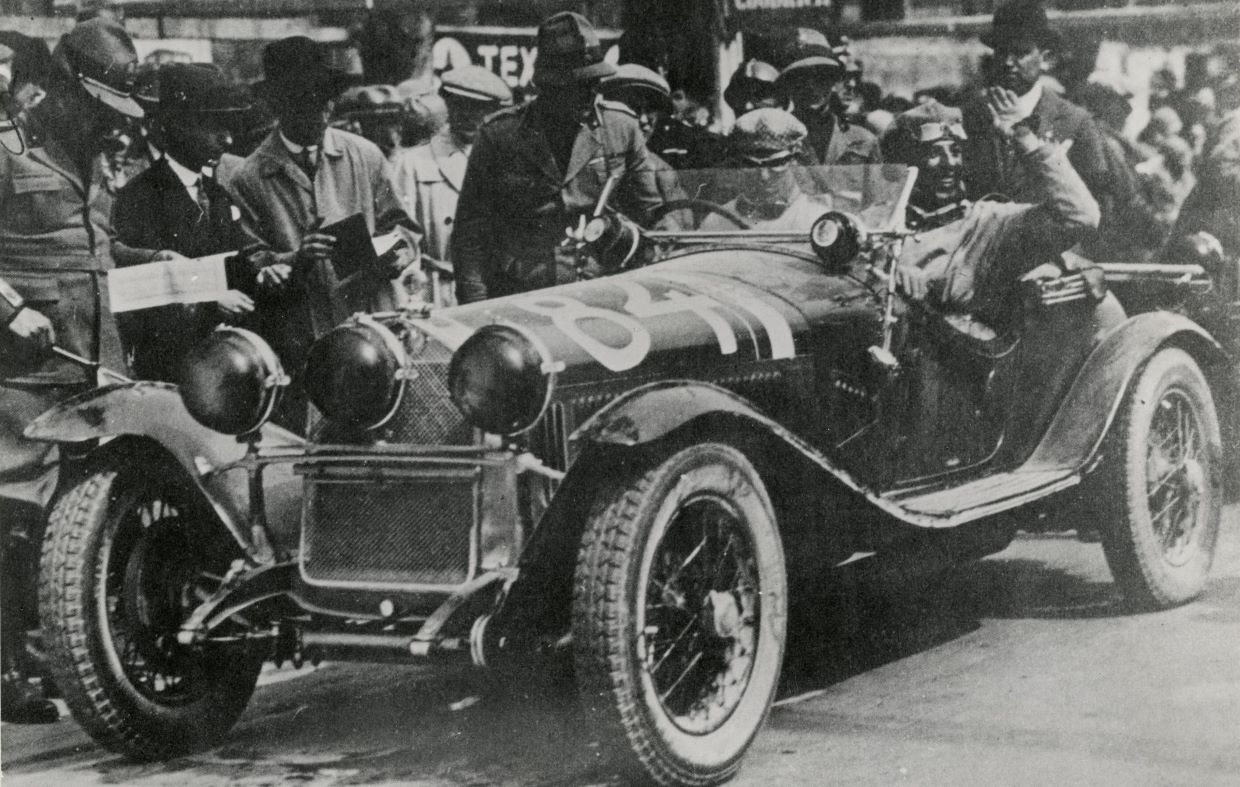
In December 1926, a group affectionately nicknamed the “Four Musketeers”—consisting of Giovanni Canestrini, a journalist with the Gazzetta dello Sport, Renzo Castagneto, secretary of the Brescia branch of the Regio Automobil Club, and enthusiastic patrons Aymo Maggi and Franco Marzotti—created a car race from Brescia to Rome and back.
The route was 1600 kilometres long, which Marzotti, who had recently returned from a trip to the United States, realised corresponded to 1000 miles. Thus the Coppa delle Mille Miglia (Thousand-Mile Cup) was born.
It was an instant success: within three editions Tazio Nuvolari and Eugenio Castellotti became the first to exceed an average speed of 100 km/h in the legendary 1930 contest, on board an Alfa Romeo 6C 1750 SS. That record was set during a golden age of absolute domination by Alfa Romeo and its courageous and equally daring drivers, who besides Nuvolari included Achille Varzi, Giuseppe Campari, Carlo Maria Pintacuda and Clemente Biondetti among the more famous names. A serious accident in 1938 caused the government to temporarily ban road racing, causing the cancellation of the 1939 edition. Nevertheless, the organisers did not lose heart and reinvented the race in the form of a circuit between Brescia, Cremona and Mantua, which was lapped nine times and called the Brescia Grand Prix of the Mille Miglia.
The competition was suspended for a second time due to the war, before resuming in 1947 under difficult circumstances, with bridges destroyed, roads torn up, fuel and tyres rationed and a car industry that was struggling to get back on its feet. The three editions from 1947 to 1949 were as difficult to organise as they were exhilarating to compete in.
The eight editions of the modern era, from 1950 to 1957 saw the emergence of official teams from all over the world, as well as professional drivers. The event took on such international importance that it contributed significantly to the reconstruction of Italy’s road network and the development of the automotive sector, becoming a driver of the country’s recovery in the immediate post-war period and beyond.
In the 1956 edition, Stirling Moss set a new average speed record of 157,65 km/h, but the race had become so dangerous that after two fatal crashes in 1957, all motor racing on public roads was banned. Refusing to admit defeat, the organisation doggedly created a formula that is still adopted for rally racing: long highway sections at legal speeds interspersed with special stages involving speed trials on purpose-built tracks or hillclimbs on private roads. The three editions of 1958, 1959 and 1961 followed this formula, which was no longer based on pure speed and ultimately proved unsuccessful.
The race was discontinued until 1968 when Alfa Romeo marked the launch of its new 1750 model, in honour of the legendary vehicle that Nuvolari drove to victory in 1930, by organising a re-enactment tour for a number of historic cars, followed by journalists on board new 1750s. This event was the precursor of modern editions.
Subsequently in 1982, the Mille Miglia was revived as a historic re-enactment, initially on a biennial basis, and has since become a race run on public roads at legal speeds that is only open to cars involved in the 1927-1957 editions. The Mille Miglia has taken place every year since 1987 and attracts collectors and public figures from around the world, even beyond the automotive sector. But the cars are the real protagonists, because they have written the story of the Mille Miglia.
Although the inaugural edition in 1927 was won by an O.M. car, Alfa Romeo triumphed in almost half of the 24 Mille Miglia races staged from 1927 to 1957, accumulating no fewer than 11 victories. Ferrari dominated from 1948 with eight victories, including a series of six straight successes that was interrupted only by Alberto Ascari’s 1954 victory in a Lancia D24 Spider.

6C 1750 Gran Sport (1930)
The 6C 1750 Gran Sport of 1930 (Zagato body) is a car that became a legend at the Mille Miglia. Tazio Nuvolari and Giovanni Battista Guidotti won in 1930 with a 1750, and it was at this race that the driver from Mantua beat the record of 100 km/h average speed over the entire course. The contrast with Achille Varzi – also behind the wheel of an Alfa Romeo 1750 – was the leitmotif of the race, which reached its climax with a legendary overtaking manoeuvre with headlights off, to the detriment of the driver from Galliate.
6C 1750 Gran Sport, the legendary model in which Tazio Nuvolari and Giovanni Battista Guidotti won the Brescia-based race in 1930. That was the race of the legendary “overtaking in the dark” episode, when Nuvolari achieved the unprecedented feat of averaging 100km/h over the entire course. The bodywork was created by Milan atelier Zagato, and still draws gasps of admiration from those lucky enough to see it today.
The great responsibility of driving his truly iconic sports car is entrusted to Sicilian Giovanni Moceri, an experienced regularity rally driver and winner of the last two editions of the Targa Florio Classic. The 1750 is a genuine icon of the Mille Miglia, because it arguably encapsulates the history of the race more than any other car.
Its heyday was during the so-called epic period of the Coppa delle Mille Miglia, when Alfa Romeo dominated the event with ace drivers such as Giuseppe Campari, Tazio Nuvolari, Achille Varzi, Baconin Borzacchini, Carlo Felice Trossi, Carlo Maria Pintacuda and Clemente Biondetti.
Zagato, produced various sport spiders based on the 6C 1750 chassis. The engine, designed by Vittorio Jano and derived from the earlier 6C 1500’s engine, is an inline six-cylinder twin-cam of 1.752 cc driven by a Roots-type supercharger. Initially the inline-six developed 85 HP, which increased to 102 HP in the so-called fixed head version. This 1750 weighs 840 kg, and reaches a top speed of 170 km/h.
A total of 213 examples of the 4th/5th series Gran Sport were produced between 1930 and 1932, including only six fixed head versions.
The 1930 edition was notable for the victory of Nuvolari and Guidotti who set a new record by covering the 1600-kilometre race at an average speed exceeding 100 km/h (100.430 km/h to be precise). Alfa Romeos occupied the first four places, with Nuvolari and Guidotti ranked immediately above Varzi/Canavesi, Campari/Marinoni and Ghersi/Cortese respectively. Not far behind, another four Alfa cars (6C 1750 GS) occupied the eighth to eleventh places.
But besides the records and impressive statistics, the winning pair entered into legend or Guidotti’s account of how he and Nuvolari overtook Achille Varzi just before the finish with their headlights switched off to surprise their rival. Was it fact or fiction? Nuvolari never denied it, although the first light of dawn may have helped him perform the manoeuvre.

The Alfa 6C 2300 Coupé Mille Miglia (1938)
The 6C 2300 Coupé Mille Miglia, with body made by Touring, will be on the start platform in Viale Venezia. The name “Mille Miglia” pays homage to the excellent performance of the 6C 2300 Pescara in 1937, on which it was based: finishing first in its category and fourth in the general ranking. Under the bonnet is a 2,309cm3 straight-six capable of delivering 95hp at 4,500rpm and propelling the vehicle to 170km/h. The car will be driven by a crew of excellence: Arturo Merzario and Jean-Pierre Jarier. The competitive duo represents the glorious history of Alfa Romeo in motorsports. They took the sport prototypes world championship in 1977, winning all the races on the calendar in their category in an Alfa Romeo 33 SC 12.
The Alfa Romeo 6C 2300 is a milestone in motoring history, being one of the first European cars to adopt independent suspension. The 2309 cm3 six-cylinder engine, which delivers 95 HP at 4500 rpm in this version, consists of a cast iron monoblock, light alloy cylinder head and overhead V valves with overhead camshafts controlled by chains and gears. The gearbox has four speeds, plus reverse, with the shift lever on the centre console. The drum brakes on all four wheels are hydraulically controlled. The front suspension is independent, with transverse link and helical springs; while the rear suspension is also independent and consists of an oblique link, transverse connecting rod and longitudinal torsion bar. A weight of 1380 kg allows this 6C 2300 to reach a remarkable top speed of 170 km/h.
Only 107 examples of the 6C 2300 Mille Miglia were produced between 1938 and 1939, one of them in a spider version.
The Alfa 6C 2300 played a commanding role in the Mille Miglia between 1935 and 1938. It took first place in its class and fourth position overall in 1937 with Boratto/Guidotti in the cockpit, followed immediately in second place and sixth overall by the pairing of Cortese/Guatta. Another class victory and ninth place overall went to Cattaneo/Donati in1936 before Cortese/Fumagalli won their class and finished ninth overall in 1938.
Alberto Ascari Alberto Ascari accident scene on The Monza Eni Circuit (1955)
On 26 May, Alberto Ascari went to Monza to watch his friend Eugenio Castellotti test a Ferrari 750 Monza race car. Ascari was not supposed to drive that day but decided to try a few laps. As he emerged from a fast curve on the third lap the car inexplicably skidded, turned on its nose and somersaulted twice. Ascari was thrown out onto the track, he suffered multiple injuries and died a few minutes later.


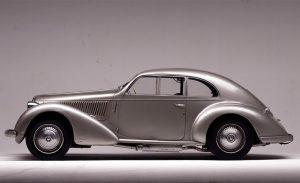

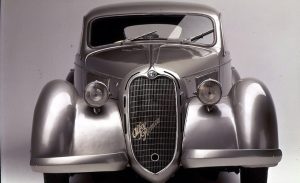
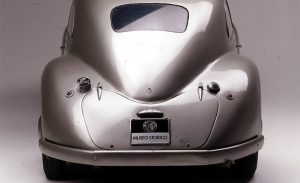
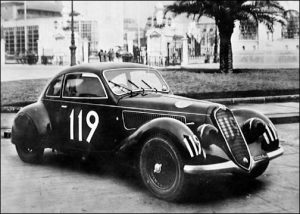

You must be logged in to post a comment.